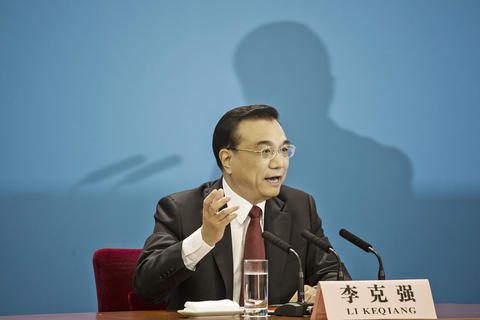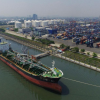China’s Growth Is Slowing Further, Should Markets Be Scared?

China’s leaders just wrapped up their annual National People’s Congress meeting, where policy, economic, market and domestic objectives are solidified in order to create a five-year plan. While the plan covers many areas, analysts globally tend to focus on the economic growth rate that leaders plan to deliver. This year, Premier Li claimed China will grow between 6.5-7%, and signaled 6.5% was more likely. This number is slightly lower than 2015 (6.9%) and reaffirms what everyone already knows: China’s economy cannot keep up the crazy pace of the last few years, let alone decades.
China’s Growth Rates (GDP)

But is a growth rate of 6.5% even achievable, and should anyone outside of China be worried about this new, lower target? Given its large size within the global economy, when China’s markets sneeze, the rest of the world can get pneumonia. The two most volatile periods in markets over the last six months corresponded with volatility in Chinese currency markets and disappointing economic data. By forcefully proclaiming a 6.5% growth target, Premier Li is signaling the policy leaders intend the slowdown to continue, but will fine-tune policy in order to avoid a hard landing.
Here’s what we can expect. First, Chinese exports and trade are still a drag on its growth. The rest of the world is not helping; slow growth in Europe and elsewhere translates into lower demand for Chinese goods. The only way this growth driver improves is if the yuan gets weaker and stimulates foreign demand, or if the rest of the world grows faster. The Chinese government did drive the currency weaker in 2015, which set off a tizzy in global currency markets. While the yuan was allowed to appreciate a bit so far this year, given the pace of capital outflows, the best guess is that a weaker currency for 2015 is more probable than a stronger one. Any sudden movements in the exchange rate would likely cause markets globally to quake. As such, this is a lower probability event, but currency movements should be monitored.
Chinese Yuan vs US Dollar (lower means stronger yuan)

Second, Chinese manufacturing and industrial production data continues to slow, and is likely to be a smaller contributor to growth this year than last. The key problems lie in the large debt overhang in the corporate sector, and the fact that China is suffering from excess capacity in many industries. In the 2016 5-year plan, the government has suggested it will be focusing on trying to reduce the overcapacity issue within the coal and steel sectors. Eventually if/when the coal and steel glut is rectified, global commodities markets will get some support. However, in the short term we will not see a large impact. There are other implications. Goldman Sachs has estimated that this could cause the government to need to find new jobs for 1.8 million people currently working within these industries. Not impossible, but not easy.
Which brings us to the third growth driver: consumption. After the 2008 crisis, China has been trying to steer toward a consumption driven economy and reduce its reliance on exports. This is a slow path, but it is underway. Chinese wages climbed significantly in the past few years, and consumption along with it. However, the uncertainty over employment and economic growth is likely to be a drag on consumption this year. Luckily, the government has many tools to soften the blow, such as directed lending to the auto sector or various credit or subsidy tools. Government spending (also a form of consumption) is obviously also controlled by policy leaders. On the margin there will be no big changes. Structurally the intention is to clean up shop (anti-corruption measures, etc.), but cyclically the government is likely to increase its deficit marginally this year in order to soften the cyclical downturn.
Finally, capital investment is still one of the largest components of Chinese growth. Here is where the balancing act for policymakers is trickier. There is too much leverage in the system, and past overreliance on investment has led to rising non-performing loans (NPLs), ballooning debt for the corporate sector, and a volatile property market. Addressing these issues by adding too many constraints could cause the system to crash and deliver a hard landing – which no one wants. Consequently, we can expect to see slow progress on these fronts. If for any reason growth suffers dramatically in any given quarter, policymakers will favor stepping on the gas to stimulate investment.
Historically, official growth targets are “always” met; what we don’t know is how accurate the official data is. That said, it’s really the direction of the target that matters, and understanding whether policymakers still have the tools necessary to assure a relatively smooth path. A lower, more stable Chinese growth rate will be healthier for the rest of the world. Whether the authorities can smoothly handle a deleveraging process is a whole other question.
Featured Image Photographer: Qilai Shen/Bloomberg





